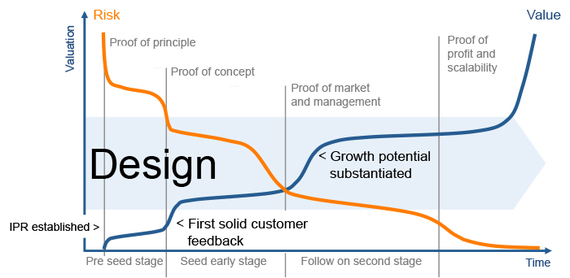Co-written by Bill Gross
There has never been a better time to start a company since there is an abundance of capital, talent and growth rate. The rules of game have changed from a "make and sell" mentality to "how fast can one turn ideas/knowledge." Dynamic, real-time conversations with potential users are now possible on a daily basis, instead of being limited to yearly feedback and this cuts iteration cycles and reduces risk. The startup ecosystem has experienced a major disruption - once again making startups sexy.
More than ever before, investors, potential talents and society at large understand that entrepreneurship is foundational to future progress. Global connectedness means everyone can have direct access to potential users, rather than going though layers of middlemen to interpret customers' wishes and to a large extent, it is now possible to test the market and technologies by bootstrapping. This entails using well-established lean, agile processes, open innovation and crowdsourcing of insights, together with useful performance metrics. So, how does design contribute to this new reality?
In this new startup ecosystem, design adds tremendous value at the front end of the process. Design, like no other profession, can facilitate a meaningful and dynamic conversation with potential customers though a cycle of creating a Minimum Viable Product (MVP), testing the product on users, learning from users behavior and then updating the MVP.
By designing and creating prototypes that simulate, users are able to see and feel the advertising, purchasing experience and interface and can better comprehend an offering's potential. Users can then assist in co-creating the value proposition, as well as, formulate and disseminate the story. All this, before a dime has been spent on engineering and manufacturing.
For a startup to take off, scale and experience exponential growth, they need large injections of capital. When it is time to invite investors to finance the engineering, marketing and manufacturing, most startups with a proven value proposition and a market, have already created considerable equity from sweat, tears and risk-taking, enabling them to capture a larger piece of the pie and keep control of their nascent venture. So, how does design attract investors?
Investors will invest in founders and founding teams with passion for a cause they themselves burn for and not on the basis of money. Ninety-two percent of Venture Capital backed startups fail the first time and it is notoriously difficult to reliably predict successful startups. In the early phases, investors go for the jockey (the team) and in the later phases, for the horse (the plan). So, a team with design understanding serves a startup well in both phases.
Thus far, the best indicator of a team's chances for success lies in the team's behavior and if a team displays adaptability, they are more likely to be successful. A visual metaphor compares a startup team to a heat-seeking missile. A missile is not path dependent and is extremely flexible since all it cares about is following the energy of the moving target.
When design comes in at ground zero, startups have a higher success rate, however, the amount of impact of design makes is still unknown. So, in April of this year, ingomar&ingomar - consulting, in collaboration with multiple universities, began investigating Design Driven Startups and how design can best support the new lifeblood of our society. Their aim is to provide predictive success metrics thus taking some of the gamble out of entrepreneurship.
Special thanks to Bill Gross for researching and co-writing this article.
